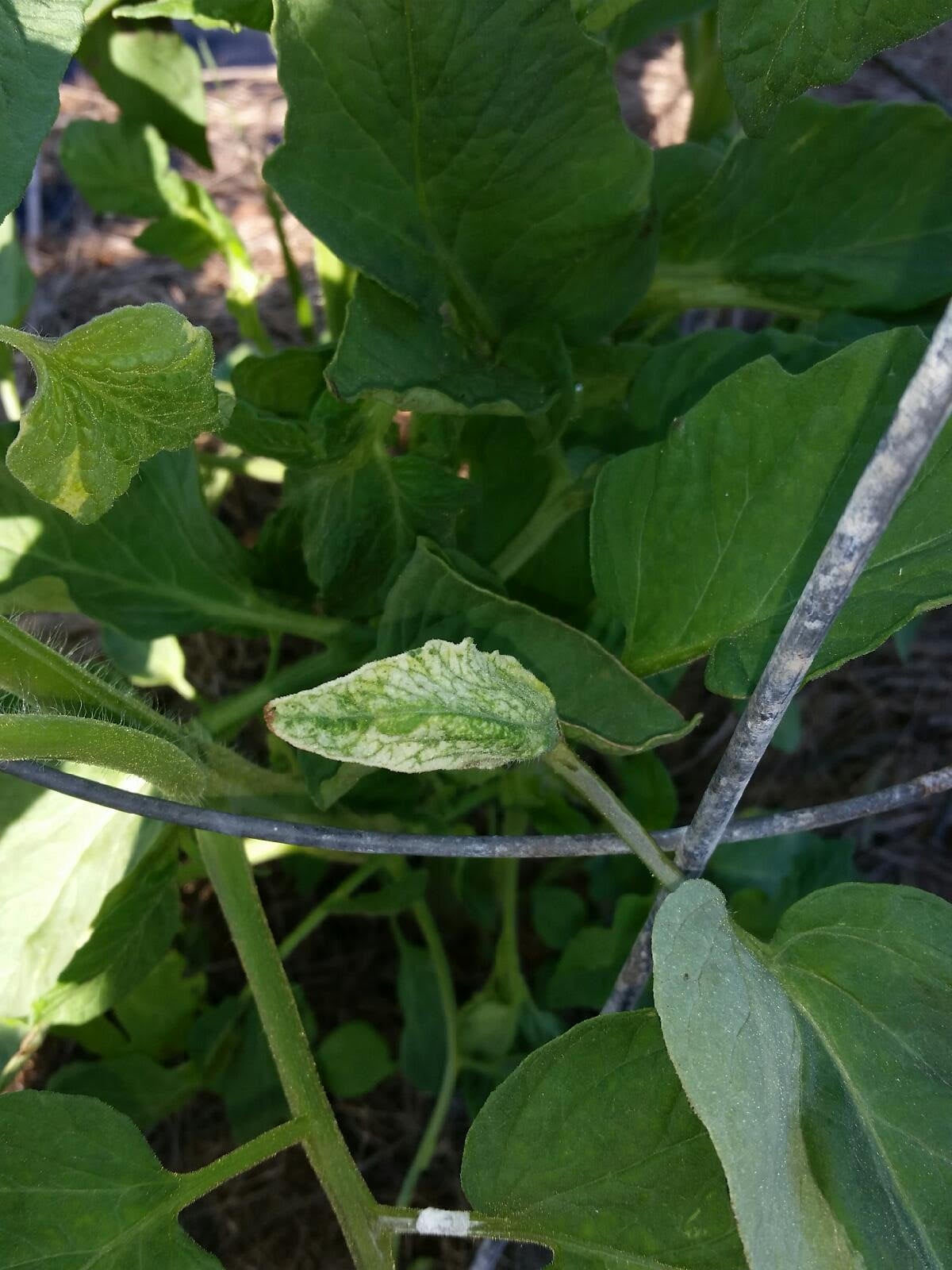Tomato Leaves Turn White: How To Treat Tomato Plants With White Leaves

One of the most commonly grown garden plants, tomatoes are quite sensitive to both cold and too much sun. Due to their extremely long growing season, many people start their plants indoors and then transplant later in the growing season once the soil has consistently warmed.
The transplantation of the tomato seedlings is where one may run into a problem. Their susceptibility to temperature and light extremes often renders them vulnerable to white tomato leaves. Let's explore this white leaf color on tomato plants.
Why Do Tomato Leaves Turn White?
If you're unlucky enough to find a silver or white leaf color on your tomato plants, it is undoubtedly the result of either sun damage, cold vulnerability, or some sort of disease (most likely fungal).
The most common cause of leaves turning white in tomatoes, especially young seedlings that are recently transplanted, is exposure to intense sunlight. Although tomato plants need full sun for healthy growth, a sudden change of venue from indoors to outdoors may shock the plants and cause the tomato leaves to turn white.
Generally, the damage from sunlight appears as a border of white leaf color on the tomato plant. The leaves may curl and break, leaving minimal foliage on the plant. Winds in the area of transplantation exacerbate this condition as well. Mature tomato plants suffering from sunscald will include blistered or papery fruits.
The solution to tomato plants with white leaves due to sun over exposure is simple in retrospect. In the future, allow the transplants to languish in the shade for a few days and/or move them outside on a cloudy day, then gradually place them in the sun for a couple of hours each day over the course of one or two weeks. This is called hardening off. Either of these gives the plant time to acclimate to its more radical environs.
If hot, dry winds are an additional issue, try placing a windbreak around the transplants, or relocate to a protected area. With either issue, if the windburn or sun scorch is not severe, the plant will likely recover; remove any afflicted leaves to discourage disease.
Gardening tips, videos, info and more delivered right to your inbox!
Sign up for the Gardening Know How newsletter today and receive a free copy of our e-book "How to Grow Delicious Tomatoes".
Fungal Reasons for Tomato Plants with White Leaves
Other than environmental exposure, another explanation for tomato plants with white leaves is disease. Primarily the disease is fungal in variety and resulting from the same cause, overwatering. Too much water in the soil stimulates the fungal spores and causes root rot, Alternaria, or Septoria leaf spot, which has dark borders surrounding the white blotches on the leaves.
Transplants should be watered deeply for the first three days and thereafter, dependent on your climate, once a week to every two weeks. This promotes deep root development and deters fungal spores from taking hold. If a fungal disease has taken root, so to speak, try a fungicide made for use on tomato plants to repair any leaves that are turning white on your tomatoes.
Nutrients Causing Leaves Turning White in Tomatoes
Lastly, a potential cause of the leaves turning white in your tomatoes is a lack or surplus of nutrients. Plants lacking nitrogen or phosphorus may show whitening or yellowing of their leaves. A tomato fertilizer containing the proper amounts of these nutrients is a likely solution.
Additionally, deficiencies of calcium or magnesium will also cause whitening of leaves with the leaf veins retaining their green hue. Again, an application of the proper fertilizer is in order. Additionally, garden lime will aid in the calcium deficiency.
Looking for additional tips on growing perfect tomatoes? Download our FREE Tomato Growing Guide and learn how to grow delicious tomatoes.
Love Gardening Know How? Our latest book, The Complete Guide to Vegetable Gardening, is available now!
Perfect for the gardener in your life, or for your own coffee table, this book boasts 224 pages of high-quality pictures, expert tips, and easy-to-follow advice to get your vegetable garden growing its best. Look for it at these sellers, and wherever quality books are sold.

Amy Grant has been gardening for 30 years and writing for 15. A professional chef and caterer, Amy's area of expertise is culinary gardening.
-
 Looking For Plants To Give You The Soft And Fuzzies? Try These 5 Fuzzy Leaf Plant Options
Looking For Plants To Give You The Soft And Fuzzies? Try These 5 Fuzzy Leaf Plant OptionsLovers of texture, drama, silver foliage and tactile plants will adore these special sensory garden additions. These fuzzy leaf plant options will leave you all aglow
By Susan Albert
-
 Get Ready For A Summer Of Hummers! Grow These Full Sun Hummingbird Plants and Flowers
Get Ready For A Summer Of Hummers! Grow These Full Sun Hummingbird Plants and FlowersIf you’re lucky enough to enjoy a sunny backyard, make sure you are maxing out on your pollinator opportunities and grow these full sun hummingbird plants and flowers
By Tonya Barnett